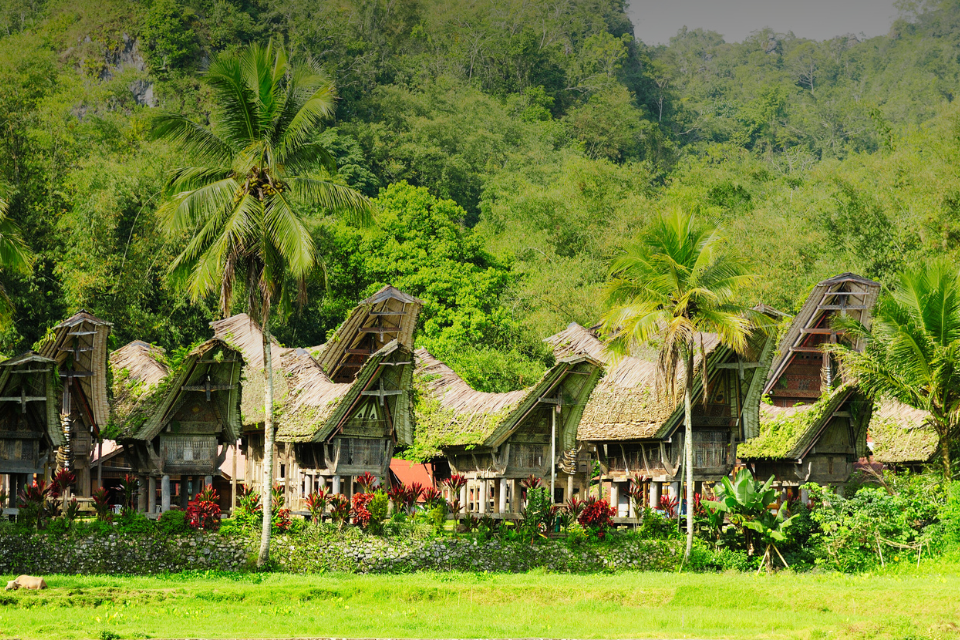1. The Soul of Toraja’s Heritage
Tucked away in the highlands of South Sulawesi, Kete Kesu is not merely a village—it is the embodiment of a civilization that speaks through silence, wood, and ritual. Time here breathes differently. Cobblestone paths wind between ancestral homes that stand with spines straight, not just from pride, but from centuries of unbroken tradition. This is not a recreated showcase. It’s real life, rich with unedited culture, a living diorama of the Torajan way. No wonder it’s often featured in the best Toraja tour packages curated for cultural travelers.
2. History Carved in Wood and Stone
The Origins of Kete Kesu
The village traces its origins back more than 400 years. It’s one of the oldest and best-preserved Torajan settlements. Its lineage is deep, with each generation adding their own narrative to the collective memory of the place. Elders speak of ancestors who walked barefoot from the mountains, settling where the water flowed like the blood of their kin—calm, strong, and essential.
Significance of Tongkonan Houses
Towering above the ground on sturdy wooden stilts, the Tongkonan houses of Kete Kesu are the village’s spine. These elaborately decorated homes, with their boat-shaped roofs pointing skyward, serve not only as residences but also as spiritual anchors. Every carving, every buffalo horn mounted on the front, is a chapter of family legacy. The structure itself is a compass—built facing north, the direction of the Torajan origin myth.
3. Rituals, Rites, and Reverence
The Role of Funeral Ceremonies
Death in Torajan culture is not an end. It is a celebration, a release, and a sacred transition. Kete Kesu is known far and wide for its elaborate funeral ceremonies that last for days and draw entire communities. These are not private affairs. They are social, spiritual, and communal, involving music, dance, and the ritual sacrifice of buffaloes. Each detail serves to honor the soul’s journey to Puya—the afterlife.
Many best Toraja tour packages include these events in their itineraries, offering travelers a rare chance to respectfully observe a once-in-a-lifetime experience.
Ancient Burial Sites in the Cliffside
A short walk from the village leads to towering cliffs where wooden coffins rest on rocky ledges, undisturbed by time. Skulls peer from crevices, not in horror, but in solemn dignity. Effigies known as tau-tau, carved in the likeness of the deceased, watch over the valley below, guarding the memories of lives once lived. These burial sites are among the most iconic in Toraja and draw anthropologists and curious travelers alike.
4. A Living Museum
Cultural Preservation through Daily Life
While Kete Kesu welcomes visitors, it doesn’t perform. Daily life unfolds with quiet authenticity—children chase roosters in the yard, elders smoke hand-rolled tobacco under the shade of Tongkonan, and rice is pounded with rhythmic patience. These are not staged spectacles but organic moments of cultural continuity.
Handicrafts and Local Artistry
Within the village, artisans create intricate wood carvings, beads, and woven textiles. Each item holds meaning—a symbolic language woven into color and form. Buying directly from the villagers not only supports the local economy but also invites travelers into the stories behind the craft. It’s culture you can hold in your hands. Souvenir stops here are often included in many of the best Toraja tour packages.
5. Kete Kesu’s Natural Surroundings
The Harmony of Village and Landscape
Kete Kesu rests gently in a cradle of green, where nature and culture intertwine seamlessly. The air carries the scent of damp earth and wild ginger, and the morning mist rolls over the hills like ancestral breath. The village doesn’t stand against nature—it grows from it.
Exploring the Rice Fields and Caves
Just beyond the last Tongkonan, verdant rice terraces ripple across the land. Narrow footpaths lead curious travelers through bamboo groves to hidden caves, some of which still contain ancient relics and bones. It’s a landscape alive with mystery, inviting quiet reflection and respectful discovery. These hidden gems are often featured in the best Toraja tour packages, making exploration both guided and immersive.
6. Connecting Past and Present
The Balance Between Tradition and Tourism
Kete Kesu walks a delicate line. Tourism brings attention, funding, and preservation—but it also risks commodifying what is sacred. The villagers, however, have shown remarkable resilience. They host, they share, but they do not perform. The culture remains unfiltered, offered with the same integrity as it has been lived for centuries.
Education Through Cultural Immersion
Many visitors leave Kete Kesu not just with photos, but with perspective. Walking among the Tongkonan and tau-tau, observing rituals and meeting families, is a lesson in humility and humanity. It is an invitation to witness a worldview where time loops, ancestors matter, and the dead are never truly gone.
7. Experience Kete Kesu with Toraja Journey
For those seeking more than just sightseeing, Toraja Journey offers curated cultural experiences that honor the soul of Kete Kesu. With deep respect for local customs, Toraja Journey ensures travelers engage meaningfully—joining traditional meals, hearing stories from the elders, and walking the sacred cliffs with local guides. It’s not just a tour; it’s a cultural bridge between the world you know and the world that time has gently cradled.
Visitors can explore Kete Kesu and other authentic destinations through some of the best Toraja tour packages offered by Toraja Journey. Explore more at Toraja Journey.
Conclusion
A short walk from the village leads to towering cliffs where wooden coffins rest on rocky ledges, undisturbed by time. Skulls peer from crevices, not in horror, but in solemn dignity. Effigies known as tau-tau, carved in the likeness of the deceased, watch over the valley below, guarding the memories of lives once lived. The Tana Toraja Traditional Settlement is currently on UNESCO’s tentative World Heritage list, recognized for its unique architecture and burial traditions asiatours.com. Additionally, National Geographic has documented the region’s profound funeral rites as some of the most remarkable in the world nationalgeographic.com

